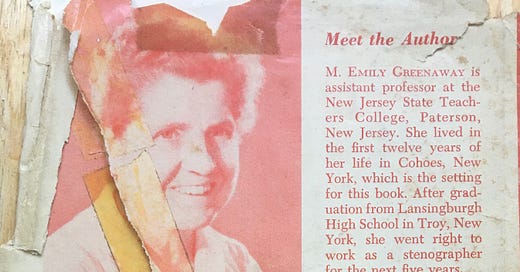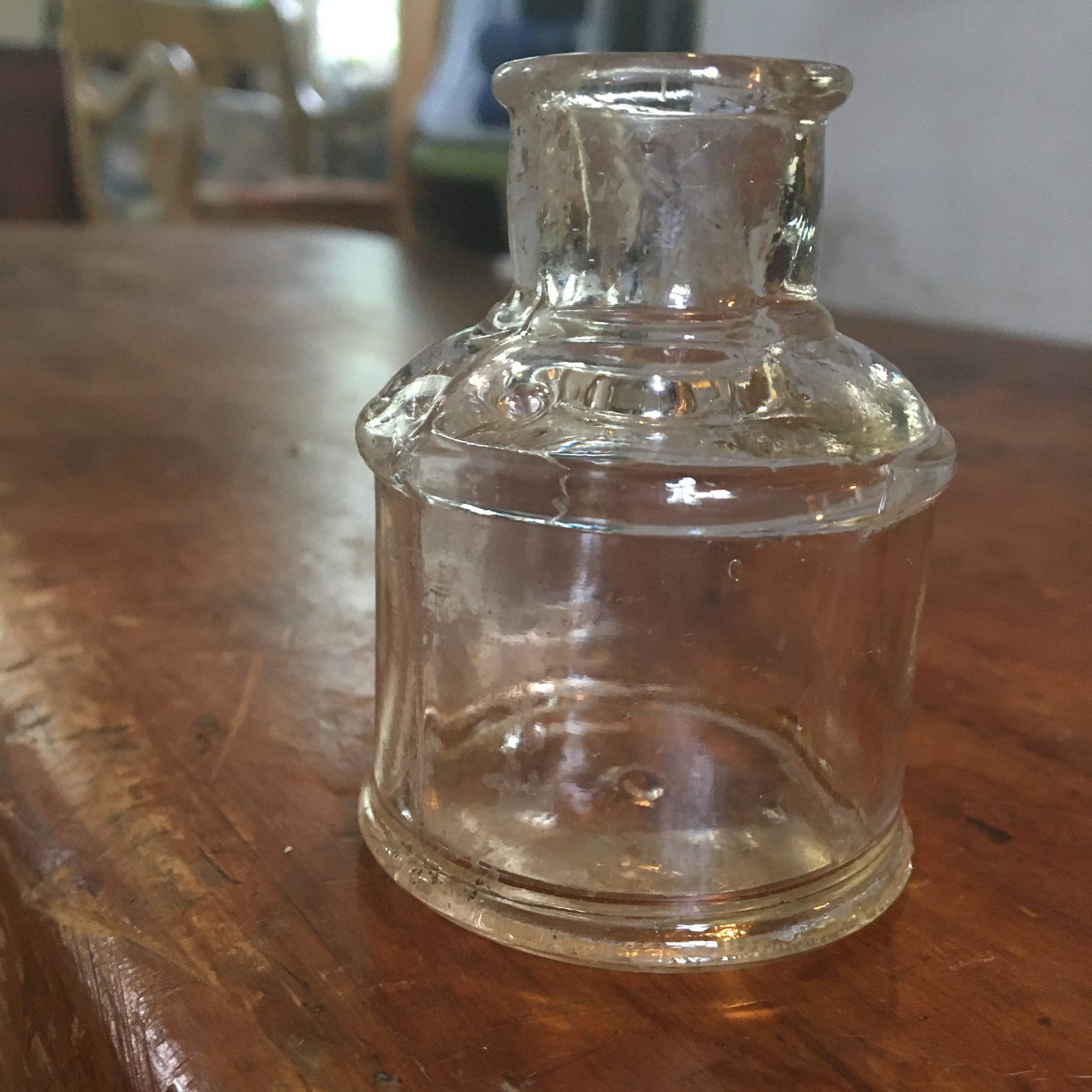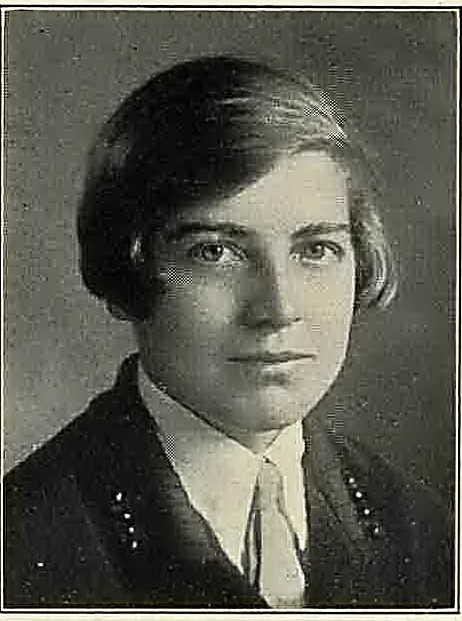Dear bread friends,
Sometimes, I feel like I’ve written my past, and am discovering it piece by piece. All Wool But the Buttons: Memories of Family Life in Upstate New York, has sent me on quite the journey.
As I recently wrote, author M. Emily Greenaway & my grandmother exchanged letters, and through looking at city directories, I found that my grandmother’s family lived in the same house the Greenaway’s had — not simultaneously, but consecutively. The book really rings bells for me because Will Greenaway, her father, was a baker. The synchronicities increased as I followed the Greenaway’s to see where her father baked once they moved to Troy in 1912. Believe it or not, in 1924, they lived at 148 Ninth Street, just behind my house.
This is baffling and beautiful. M. Emily Greenaway called herself Meg as an adult, but earlier records note her as Minnie. Minnie was a student ninety-eight years ago when she lived on my block, studying education at the New York State Teachers College in Albany. She would have taken multiple streetcars to get to classes.
I live on a hill, and between the fruit trees and plentiful weeds, a lot of our yard is bare, sloped ground. Each rain pulls up remnants of the trash people dumped there. Twenty years ago, when we arrived, we found plastic toy heroes and bread bag tags. Last year, we did a big excavation project, and older things are sprouting, pieces of crockery and broken plates, whole jars & broken ones. Suddenly, these scraps are gold.
I grab bits from the mud and stones and bring some of them inside and wash them. Maybe her hand smacked the bottom of this ketchup bottle! Maybe this part of a serving dish held her supper! Maybe her mother used cold cream from this cup! Did she live on the first floor or the second? I imagine she read at the kitchen table, where the lighting would have been good.
I’d love to know what kind of bread her father brought home. He might have worked at either Hempstead Brothers’ or Andrew Diehl’s, bakeries he named in the 1923 & 1925 directories; the 1924 one doesn’t list where he worked. I don’t know if it was the interviewer’s haste, or the baker’s reluctance. The fact that Wm./Will Greenaway lost his bakery & had to work for others was a sore point. Maybe he nursed his pride by sometimes stating only his profession when he was asked, not the place he practiced it.
Hempstead Brothers’ & Andrew Diehl’s were just down the hill from me, and places that my uncle Joe Kennedy might have gotten his bread; he was growing up in that neighborhood, and bread baking was growing up simultaneously.
In the beginning of the 20th century, professional baking was maturing, and becoming an industry. 1920 is the mile marker for Americans buying more bread than baking it at home. That doesn’t mean retail bakeries vanished all at once. Cookbooks didn’t — and still haven’t — quit running recipes for bread baking. Most cities had a number of corner bakeries, and factory bakeries were popping up.
Wherever they lived in Troy, the Greenaway’s would have seen Freihofer’s, our first factory bakery, deliver door-to-door using horse drawn wagons and trucks. But what kind of bread did Will Greenaway bake?
Born in 1864, he trained in his father’s bakery, and had his own shop in North Adams, Massachusetts from about 1890-1897. He worked in Troy and Cohoes after that, and I can assume he never found affection for machine baking; Minnie’s memoirs close with a scene of him losing two fingers in a dough mixer.
I don’t know if his father would have taught him to bake by sight and touch, or if they used scales. I imagine he would have learned to bake using the sponge method.1 A sponge is one way to preferment a portion of dough, and the opposing method is to prepare a straight dough, one where all ingredients go into the mix at once.
Perhaps this recipe from 1906 reflects how Will would have baked:
Home Made Breads with a Sponge of Ferment.
Set a sponge with one pail of straight potato ferment and a good patent flour. When this sponge reaches the first drop add one pail of water, 1 pound sugar, 1 pound lard, 3/4 of a pound salt. Break up the sponge well with the sugar and salt in it; mix in half of the flour; then add the lard; mix this in well, and then add the other flour required for a good dough; work it smooth; let it come up well, and then scale, mould, pan and prove. Bake in a solid heat. A dough made out of a sponge should be made a little tighter than a straight though because it will slack in some after it is made.2
This has a lot of shop talk, so I am going to make some bread using a sponge from a 1917 Fleischmann’s booklet for home bakers. I’ll think of Minnie Greenaway as we eat it.
In 1925, the family lived on Sixth Ave, and she was listed as a stenographer; apparently she worked as she studied. She graduated in 1926, and was the editor of the yearbook.3
Above is her portrait from the 1926 NYS Teachers College yearbook, which said her nickname was “Billy.” Below is the book jacket from All Wool But the Buttons. I’ll drop the full text from that page in a footnote--- take a gander! She was quite an adventurer.4
I love holding the shards of glass and pottery I’m finding walking the yard. I hold Minnie in my head, and have started to confuse her as a relative. The proximity she had, the proximity I have, even separated by a century, really takes my breath away.
Yours, Amy
In a 1906 cookbook for professionals, Bakers’ Bread Paul Richards wrote, “The system of sponge and dough is the most largely used by bakers." He wrote that most families that made bread at home used a straight dough method, mixing everything at once and letting it rise overnight. —Richards, Paul. Baker's Bread. Chicago: The Bakers' Helper Co, 1906.
Richards, Paul. Baker's Bread. Chicago: The Bakers' Helper Co, 1906.
"U.S., School Yearbooks, 1880-2012"; School Name: New York State College for Teachers; Year: 1926
Text from the back cover of All Wool But the Buttons:
Meet the Author
M. Emily Greenaway is assistant professor at the New Jersey State Teachers College, Paterson, New Jersey. She lived the first twelve years of her life in Cohoes, New York, which is the setting for this book. After graduation from Lansingburgh High school in Troy, New York, she went right to work as a stenographer for the next five years.
Miss Greenaway received her B.S. degree in education and her M.S. degree in English at the New York State College for Teachers, at Albany, where she was editor-in-chief of the college yearbook. She also studied at Columbia, C.C.N.Y. and N.Y.U. While she was a teacher in Port Chester, New York, she sold several articles to the Gregg Publishing Company and became a part-time editorial worker there for two years. She has published articles in Yankee Schooner, Elementary English and The Instructor.
Her hobby is mountain climbing, and she has climbed most of the “big ones” in the East. For six summers she has been a counselor in children’s camps and has organized and led numerous mountain-climbing trips. Her current enthusiasm is a Folboat kayak that she often takes to Maine and Florida. She has been on several freighter trips to the West Indies, South America, Canada and Labrador, and several windjammer cruises around Casco Bay between Portland and Bar Harbor. She lived in Greenwich Village for ten years before having a little fieldstone house built in the woods by a brook at Lake Valhalla near Montville in northern New Jersey.
Miss Greenaway is a member of the following organizations: Lake Valhalla (New Jersey) Civic Association; National Council of Teachers of English, National Education Association; New Jersey Education Association; the American Assocaition of University Women and the Rho Chapter of Pi Lambda Theta (honorary fraternity of the School of Education of New York University). Miss Greenaway is the author of Sweepstakes, a novel published by Houghton-Mifflin in 1941, and co-author of The Secretary at Work, a textbook published by McGraw-Hill in 1953.






